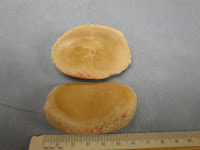On a recent blog I discussed how to search for a good veterinarian. I have stated before, that good pet care depends on a good working relationship between you and your vet. Together you work as a team in keeping your pet healthy. Teamwork is my motto, my veterinary staff can tell you that I stand by this motto daily. I could be the best vet in the world, but without a good staff to work with me, our clinic would be mediocre. I can also say the same of my clients. I can be the best vet in the world, but without good clients, all the care I give will be for not if the owner doesn't work well with me.
Having good client manners encourages a happy relationship with your vet. Here are some tips that you might consider when working with your veterinarian.
- See your vet regularly for preventive visits, not just when your pet becomes ill.
- Learn what's normal for your pet, so you recognize the first signs of illness. If a pet's not well, don't wait until she's really sick before you call your vet. It's frustrating for a vet, and heartbreaking to owners, to see an animal die of an illness that could have been treated successfully if professional care had begun sooner.
- Schedule appointments and be on time. Lateness is rude and wreaks havoc with the office's timing. Your veterinary clinic team works hard to be prompt, your lateness can put them behind for others that may need more immediate care than your pet.
- Plan ahead in order to give your veterinarian ample time to be through in tending to your pet. If you know you have a hair appointment at 3 pm, don't make your pet's appointment for 2:45 pm. Your veterinarian wants to give your pet the best care possible. This does not happen in 15 minutes. If you are not going to have the time, make arrangements to drop off your pet, so that the doctor can take the time they need to help your pet; and leave a contact number if they should have questions.
- Please turn off your cell phones while in the examination room (or leave them in your car!). There is nothing more frustrating for a veterinarian than while they are trying to communicate with your about your pet's care, you are accepting phone calls. At this office, we recognize your time is just as valuable as ours. Your pet's care is important to us, and we assume that it is important to you; interruptions from phone calls distracts you and the doctor and interferes with the doctor's communications with you about your pet. How would you feel if every few minutes the doctor stopped working with you to answer their cell phone or the receptionist interrupted the examination for the doctor to take a phone call?
- For your pet's safety as well as that of other clients and pets, bring your cat to the veterinary office in a carrier, and your dog in on a leash. I can think of a dozen safety reasons for this practice. If you do not have one, ask the receptionist for one, they are glad to help you.
- Don't disturb your veterinarian during non-working hours for matters that can wait, and don't expect your veterinarian to diagnose a pet's problem over the telephone. Your finding out the cost of a spay or neuter can be answered by the receptionist during normal business hours. Your vet has a family life just like you, whose lives are often interrupted by emergencies. Their time off is as valuable to them as yours is to you. If you call your veterinarian after hours, they assume you have an life threatening emergency, want them to come in to deal with your pet's crisis and are prepared for the added expense for after hours treatments.
- If you have an emergency during business hours, if possible call ahead so that your veterinarian and veterinary staff can be prepared to assist you and your pet.
- Be prepared to pay for your veterinarian's services at the time they are delivered. While your veterinary team are a compassionate and caring group of people, your pet is your financial responsibility and not theirs. Medical supplies must be restocked, utilities paid, etc. and this means your veterinary care team expects to be compensated for their work. At our clinic we will give you an estimate for your pet's care so that you can be prepared for the expenses that may incur. Show your appreciation for your pet's care by paying for it's care at it's discharge from the hospital.
- Be patient. Emergencies and other unexpected long treatments happen during the day, sometimes these interfere with normal appointments. Put yourself in the other clients shoes. If your pet had a sudden unexpected life threatening illness, would you expect your veterinarian to put off your pet while they take care of a pet with a torn toe nail?
Many of these tips are just common courtesies. Here at the ACC we strive to treat others the way we would wish to be treated. We hope that our clients will give us the same consideration and put themselves in their veterinarian's shoes. In this action, together we can work harmoniously and for the benefit of your pet.


